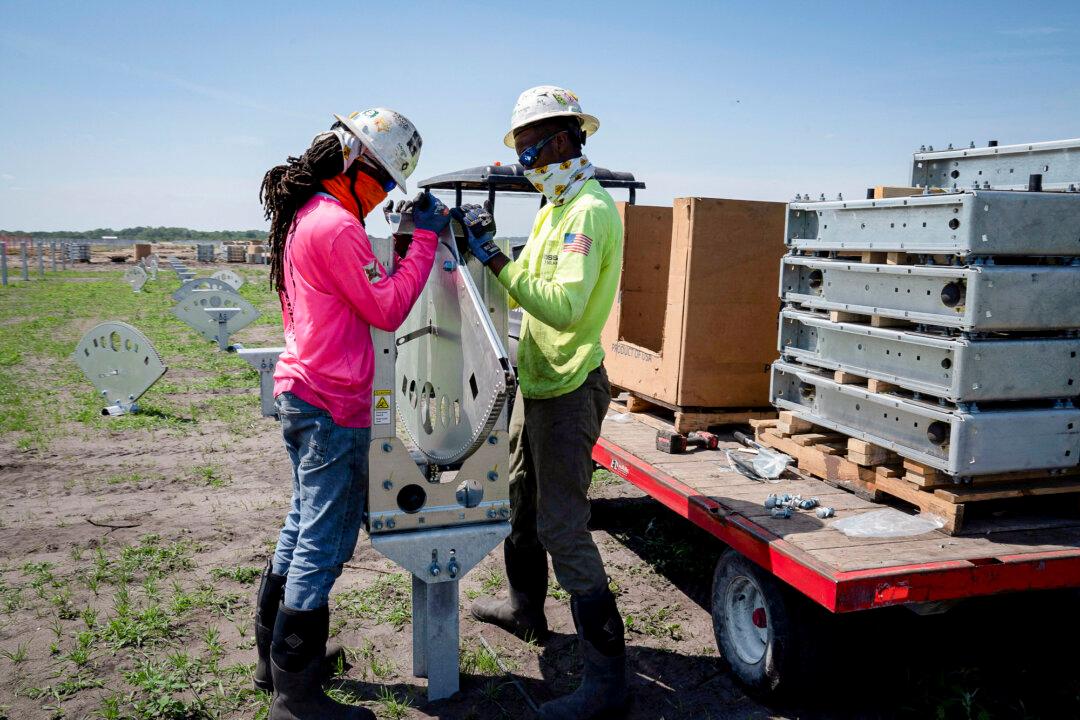“Clean energy” development accounted for 6 percent of all new employment in the United States in 2023, adding 142,000 jobs to the nation’s collective payroll, according to a U.S. Department of Energy (DOE) report released on Aug. 28.
The DOE’s 227-page 2024 U.S. Energy and Employment Report (USEER) states that the nation’s overall energy workforce grew by more than 250,000 jobs, or 2 percent, in 2023, with 56 percent of those new jobs in clean energy—primarily solar, wind, and construction of related infrastructure.





